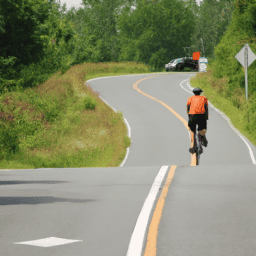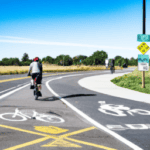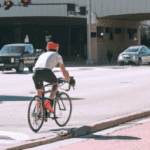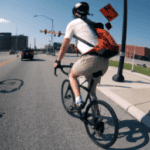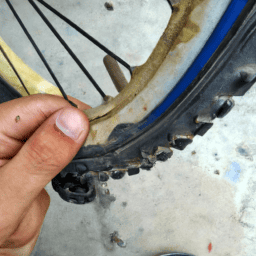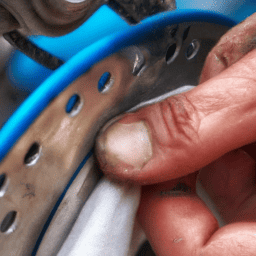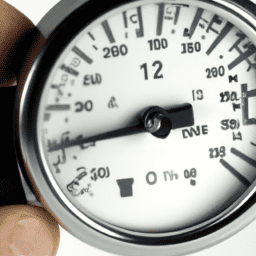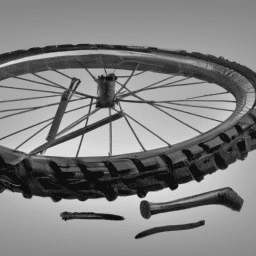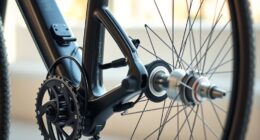As someone who bikes, you’re aware that streets without specific lanes for bicycles pose a navigation challenge. Being on the road alongside cars demands increased vigilance and strict observance of traffic regulations to maintain your safety. Recognizing the optimal spot to place yourself on the roadway is crucial to preventing accidents and ensuring that motorists can see you.
First and foremost, it’s crucial to remember that bicycles are considered vehicles and must follow the same rules of the road as cars and trucks. When there is no bicycle lane available, you should ride on the right side of the road, in the same direction as traffic.
This positioning is essential for several reasons, including your visibility to drivers, your ability to anticipate traffic movements, and your ability to follow traffic signals and signs. In the following paragraphs, we’ll explore more in-depth the best practices for navigating roads without designated bicycle lanes.
Key Takeaways
- Bicyclists must follow the same rules of the road as cars and trucks.
- When there is no bicycle lane available, cyclists should ride on the right side of the road.
- Staying close to the curb can prevent collisions and allows for smoother traffic flow.
- Road positioning is crucial for a safe and comfortable ride, and cyclists should prioritize safety and be cautious when passing parked cars or obstacles.
Understand Traffic Laws
You’ll want to pay attention to traffic laws so that you know where to ride your bike when there is no designated lane. Understanding legal rights is essential to ensure that you’re not breaking any laws while cycling on the road.
In most states, bicycles are considered vehicles, and riders have the same rights and responsibilities as drivers of cars. This means that you must follow all traffic laws, signals, and signs and respect the right of way of other road users.
Safety measures are also crucial when cycling on the road. Always wear a helmet, use lights and reflective clothing when cycling at night, and make sure your bike is in good condition.
In addition, always signal your intentions before turning or changing lanes and be aware of your surroundings to avoid accidents. With these safety measures in mind, you can confidently ride your bike on the road, even when there is no designated lane.
Remember, understanding traffic laws and taking safety measures are critical when cycling on the road. Now that you know your legal rights and how to stay safe while cycling, let’s move on to the next section about riding on the right side of the road.
Ride on the Right Side of the Road
When riding on the right side of the road, it’s important to stay as close to the curb as possible. This helps to prevent collisions and allows for smoother traffic flow.
Additionally, using hand signals to indicate turns is crucial for ensuring the safety of both the cyclist and surrounding motorists. Remember to always communicate your actions to those around you to avoid any potential accidents.
Stay as Close to the Curb as Possible
To fully enjoy a bike ride on a road without a designated lane, cyclists should aim to stay as close to the curb as possible. Road positioning is crucial for a safe and comfortable ride, and staying near the curb can prevent collisions with passing vehicles. However, it is important to be aware of road hazards such as potholes, debris, and storm drains. These hazards can cause a cyclist to swerve, which could result in a collision with a car or other obstacles.
To further understand the importance of staying close to the curb, refer to the table below. It highlights the difference in clearance between a cyclist and a car when the cyclist is riding in different positions on the road. As you can see, a cyclist riding in the center of the road is much closer to a passing car than if they were riding close to the curb. This is why it is important to always be aware of your road positioning when riding on a road without a designated lane.
Transitioning into the subsequent section, it is also important to use hand signals to indicate turns, as this alerts drivers to your intended direction.
Use Hand Signals to Indicate Turns
Using hand signals while cycling is crucial for communicating with drivers and indicating turns, making it easier for both riders and drivers to navigate the road safely and efficiently. Here are some important things to keep in mind when using hand signals while cycling:
-
Use your left arm to signal a left turn by extending it straight out to the side.
-
Use your right arm to signal a right turn by extending it straight out to the side or by bending your elbow and pointing your arm upward.
-
Use your left or right arm to signal that you’re slowing down or stopping by extending it downward with your palm facing back.
-
Make sure to hold your signals for a few seconds before turning or slowing down to give drivers enough time to react.
Proper hand signal techniques are essential for ensuring a safe and efficient ride. However, it’s also important to stay visible to motorists. By wearing bright or reflective clothing and using lights or reflectors on your bike, you can ensure that drivers can see you on the road.
Stay Visible to Motorists
Make sure you’re visible to motorists by wearing bright clothing and using lights on your bike, especially when riding on the road without a bicycle lane. Wearing bright colors makes you more visible, especially during low-light conditions.
For added visibility, use lights on the front and back of your bike. You can also use reflectors on your pedals and wheels.
Being visible to motorists is important because it helps prevent accidents. When motorists can see you clearly, they’re more likely to give you enough space on the road.
Remember to always ride defensively and anticipate the actions of other drivers. In the next section, we’ll discuss how to be alert and aware of your surroundings while riding.
Be Alert and Aware of Surroundings
As a bicyclist, it’s crucial to always be alert and aware of your surroundings. This means keeping an eye out for potential hazards on the road, such as potholes, debris, and uneven surfaces.
Additionally, it’s important to be mindful of traffic flow and anticipate the movements of other vehicles around you. By staying vigilant and focused, you can help ensure your safety while cycling.
Watch for Hazards on the Road
Bicycling on the road can be hazardous as there are many potential dangers that a cyclist must be aware of, such as potholes, debris, and uneven surfaces. Road conditions can also be a major factor in creating hazards for cyclists. Weather hazards such as rain, snow, and ice can make the road slippery and increase the likelihood of accidents. Additionally, roads with heavy traffic can create a stressful environment for cyclists, as drivers may not always be aware of their presence.
To avoid these hazards, it’s important to watch for potential dangers on the road. Here are three things you can do to stay safe while cycling:
-
Keep an eye out for potholes and other road hazards. These can cause serious injuries if you’re not careful.
-
Watch for debris, such as rocks or gravel, that can cause you to lose your balance.
-
Be aware of uneven surfaces, such as speed bumps or railroad tracks, which can be difficult to navigate on a bike.
Remember to stay alert and focused while riding, especially when road conditions are less than optimal. Being mindful of these hazards will help you stay safe and confident on the road. As you navigate the road, remember to be mindful of traffic flow and adjust your riding accordingly.
Be Mindful of Traffic Flow
Navigating traffic flow while cycling can be a challenge, but being mindful of the movements of other vehicles can greatly increase your safety on the road.
When there is no bicycle lane, it’s important to share the roadways with other vehicles and to position yourself in a spot that’s visible to drivers. You should ride in a straight line and use hand signals when turning or changing lanes. This way, other drivers will be aware of your intended movements and can adjust their driving accordingly.
In addition to sharing roadways, there are a few safety precautions you can take to minimize the risk of accidents. One of the most important things you can do is to always wear a helmet. This is a simple step that can make a huge difference in the event of a crash.
It’s also a good idea to wear bright or reflective clothing, especially if you’re riding at night. Finally, always be alert and aware of your surroundings, and don’t hesitate to take evasive action if necessary. By practicing defensive riding, you can minimize the risk of accidents and enjoy a safe and enjoyable cycling experience.
Practice Defensive Riding
As a bicyclist, it’s important to practice defensive riding in order to stay safe on the road. One key aspect of defensive riding is anticipating the actions of other drivers.
This means keeping an eye out for drivers who may be distracted, speeding, or not obeying traffic laws. Another important aspect of defensive riding is using caution when passing parked cars or obstacles on the road.
Always assume that a parked car may suddenly pull out or that an obstacle may appear in your path. By staying alert and cautious, you can minimize the risk of accidents and ensure that you arrive at your destination safely.
Anticipate the Actions of Other Drivers
When you’re riding your bike on a road without a designated lane, you should always be aware of what other drivers are doing. Predicting their behavior is key to keeping yourself safe. Situational awareness is also important so you can anticipate any potential hazards on the road.
To help you anticipate the actions of other drivers, use the following table:
| Driver Signal | What it Means |
|---|---|
| Turn signal on | Driver is likely going to turn soon |
| Car slowing down | Driver may be looking for a parking spot or turning |
| Car door opening | Someone is getting out of the car, be cautious |
| Driver looking in your direction | They may be about to turn or merge onto your lane |
| Driver using phone or distracted | Be extra cautious and give them more space |
By being aware of these signals, you can better anticipate the actions of other drivers and adjust your riding accordingly. Remember, always prioritize your safety and be cautious when passing parked cars or obstacles.
Use Caution When Passing Parked Cars or Obstacles
To stay safe while riding, make sure you use caution when passing parked cars or obstacles on your route. Passing parked cars can be dangerous because a car door can suddenly swing open, and you can collide with it. Always ride at a safe distance from parked cars, and be prepared to slow down or stop if necessary.
When passing parked cars, use the following technique to avoid the risk of getting hit by an opening door:
- Look for signs of movement inside the car, such as a person sitting behind the wheel or someone adjusting the seat.
- Ride far enough away from the parked cars to avoid being hit by a door that suddenly opens.
- If you can’t ride far enough away, slow down and be ready to stop if a door opens.
- If you can’t avoid a door that is opening, swerve away from it if possible.
Another obstacle that you may need to pass while riding is debris or trash on the road. Avoid swerving suddenly to avoid such obstacles as this can cause you to lose balance and fall.
Instead, use the following technique to pass obstacles safely:
- Look ahead for obstacles and plan your route accordingly.
- Signal your intention to pass the obstacle by signaling with your arm or verbally.
- Slow down and approach the obstacle at a safe speed.
- Avoid swerving suddenly and instead ride straight over the obstacle.
- After passing the obstacle, check your surroundings for any cars or other obstacles before returning to your original position on the road.
By following these passing techniques and obstacle avoidance strategies, you can ride safely and avoid accidents while cycling on the road. Always prioritize your safety and be aware of your surroundings to ensure a successful ride.
Frequently Asked Questions
How should a bicyclist signal to drivers that they are turning?
When turning, always use proper hand signals and make eye contact with drivers to ensure they see you. This helps prevent accidents and keeps you safe, especially when there is no designated bicycle lane.
What should a bicyclist do if a driver is following too closely?
When dealing with aggressive drivers, maintaining safety is crucial for a bicyclist. If a driver is following too closely, signal to move over and maintain a safe distance.
Are there any circumstances where a bicyclist can ride on the left side of the road?
You should never ride opposite traffic unless you are making a left turn. Road sharing etiquette requires that you ride as far to the right as possible, while still being visible to drivers and avoiding hazards.
What is the maximum speed that a bicyclist should ride on the road?
To ensure safety, it is important for bicyclists to train in techniques and wear appropriate safety gear. While there is no specific maximum speed for riding on the road, it is important to always follow traffic laws and ride at a safe speed.
Is it legal for a bicyclist to use a cell phone while riding on the road?
Using a cell phone while riding a bicycle on the road is illegal in most states and can lead to distracted riding. Bicyclist safety should always be a priority, so it is best to avoid phone use while cycling.
Conclusion
In conclusion, bicyclists must always prioritize their safety while riding on roads without designated bicycle lanes. It’s crucial to understand and follow traffic laws, ride on the right side of the road, and stay visible to motorists. Additionally, being alert and aware of surroundings and practicing defensive riding can help prevent accidents.
Think of yourself as a knight riding a horse on a battlefield. You’re the smallest and weakest in the midst of larger and stronger opponents. But with the right armor and battle strategy, you can emerge victorious.
Similarly, as a bicyclist, you may feel vulnerable on the road, but by equipping yourself with the right safety measures and techniques, you can navigate the battlefield of traffic with confidence and emerge unscathed.
Always remember that safety should be your top priority. By following these guidelines and treating yourself as a warrior on a mission, you can effectively and safely navigate the roads without designated bicycle lanes. Stay vigilant, stay alert, and stay safe.
